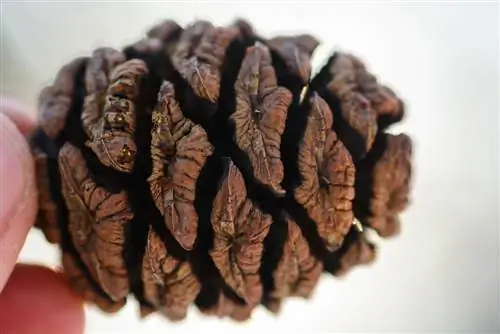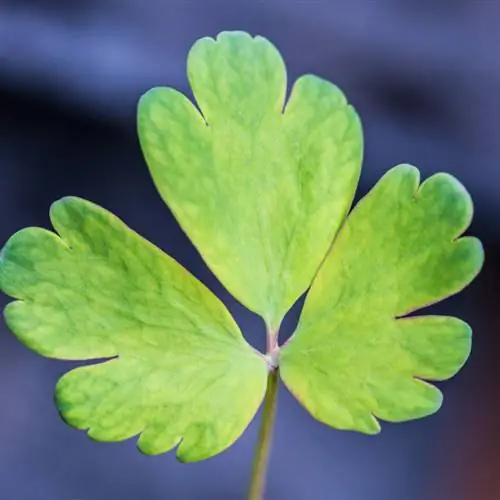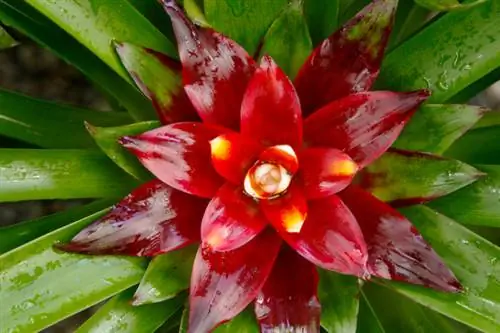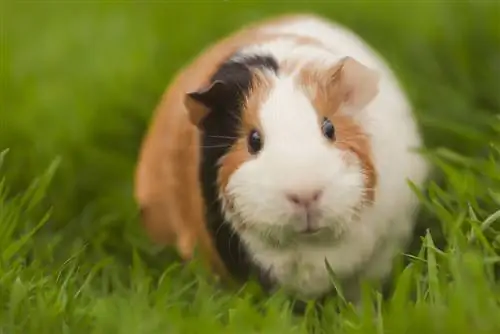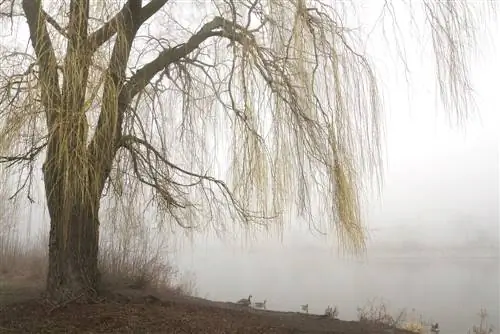- Author admin [email protected].
- Public 2023-12-25 17:45.
- Last modified 2025-01-23 11:21.
Small, olive-green cones are hidden between the needles of the sequoia tree. They are particularly valuable for propagation because they contain the seeds. They also serve as food for wild animals and have long attracted the interest of researchers.
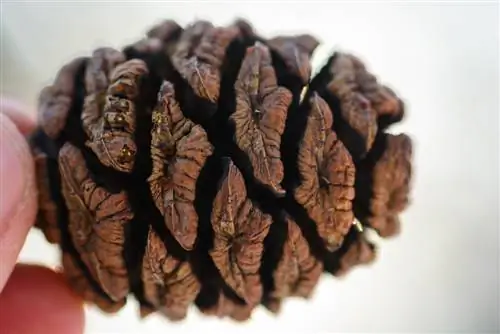
What are sequoia cones like and how are they propagated?
Sequoia cones are olive-green, egg-shaped reproductive organs that contain seeds. They grow up to 8.5 cm long and 5.5 cm wide, become woody in autumn and fall down. Reproduction occurs through wind- or animal-assisted pollination and seed dropping, especially during heat and forest fires.
Construction of the sequoia cone
The cone of a sequoia tree has the following properties:
- Length: up to 8.5cm
- Width: up to 5.5 cm
- Shape: blunt and ovoid
- Colour: olive green, later browning
- Quantity: 10,000 to 30,000 cones on a tree
- wood up and fall down in autumn
- occur singly or in groups
- upright growth at flowering time
- tire cones hanging down
Propagation through cones
The cones of a sequoia tree contain the seeds with which it reproduces. In order to better understand the seed release of a sequoia cone, it makes sense to first look at its structure.
Building a sequoia cone
A sequoia tree cone has about 25 cone scales. These are arranged in a spiral and carry the ovules, which in turn are arranged in two rows. Their job is to form pollination drops with which Sequoiadendron giganteum reproduces (see below). These pollination drops are hidden deep inside the cone.
Pollination and seed dropping
The sequoia tree has two natural pollination helpers:
- the wind
- and the Douglas Squirrel
On the one hand, the cones catch pollen that the wind carries with them. If these hit the pollination drops inside the cone, fertilization takes place.
Similarly, the Douglas squirrel, which uses the cones as food, carries the seeds from tree to tree.
Sequoiadendron giganteum is also a monoecious plant. This means that the tree has both male and female flowers, so it can fertilize itself.
The cones dry out at high temperatures. This causes the ovules to open and release the germination material. Forest fires in particular, which are not uncommon in Western America, the home of the sequoia tree, trigger this process. In this case, the still immature, green cones also release their seeds. Contrary to what you might expect, the fire has an extremely positive effect on the development of the sequoia tree stands. While the thick bark protects the trunk, the fires clear the soil and provide it with sufficient light through the death of neighboring plants. This creates the best conditions for the germination of the dropped seeds.
Sequoia cones in the focus of research
In order to artificially increase sequoia tree populations, scientists harvest their cones from the treetops. The tree fruits, which are usually still unripe, are then heated strongly so that they open and release the seeds. On the one hand, the seeds are used for experimental purposes to obtain more precise information about the giant tree, and on the other hand, they are commercially available or sold to tree nurseries so that you too can soon enjoy your own sequoia tree in your garden.

